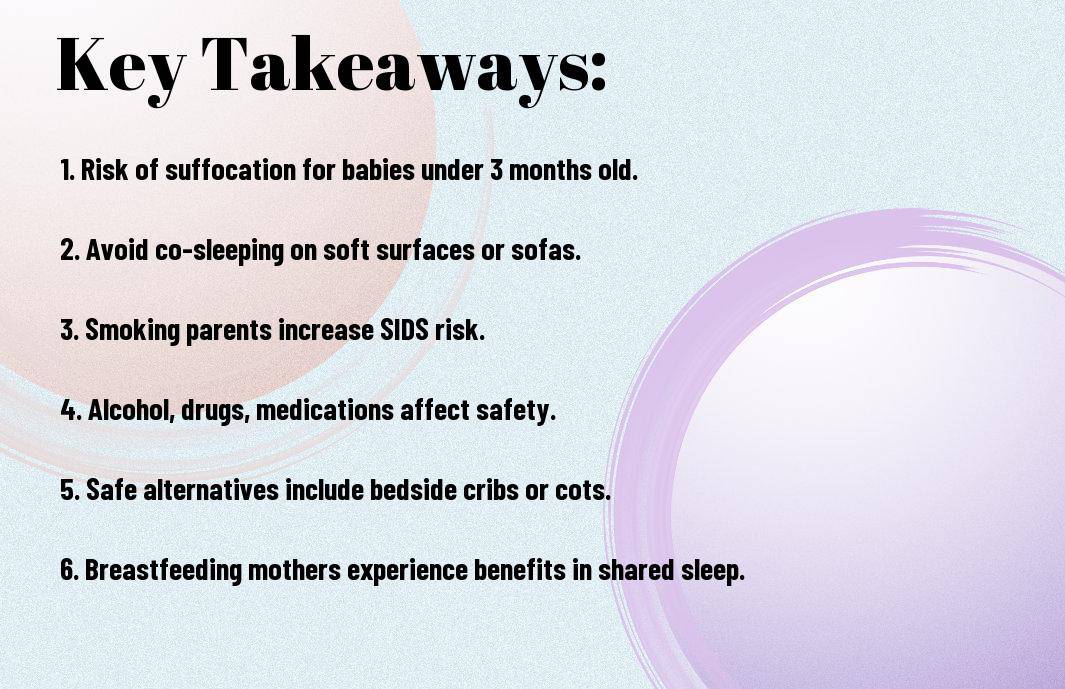tips, tricks and guides for parenthood
Co-sleeping, the practice of parents and children sharing a bed, has been a topic of debate among experts and parents alike. While some view it as a bonding experience that promotes attachment and eases night-time parenting, others raise concerns about safety and potential risks. In this blog post, we will explore the different perspectives on co-sleeping, as well as provide guidelines to help parents make informed decisions about whether it is the right choice for their family. By understanding the debate and considering the relevant factors, parents can navigate the complexities of co-sleeping to create a safe and nurturing sleep environment for their children.

Co-sleeping, the practice of sleeping in close proximity to your baby, has been associated with various benefits. It can promote bonding between parent and child, make breastfeeding easier during the night, and help both the parent and baby get more restful sleep. Some studies suggest that co-sleeping may even lower the risk of Sudden Infant Death Syndrome (SIDS) when practiced safely and responsibly.
While co-sleeping can offer advantages, there are also risks and concerns to consider. These include the potential for accidental suffocation or strangulation if the parent or bedding covers the baby's face, an increased risk of falls from the bed for the baby, and a higher likelihood of the baby becoming dependent on co-sleeping for sleep. It's crucial to weigh these factors carefully and take precautions to minimise any risks associated with co-sleeping.
The American Academy of Pediatrics (AAP) recommends against co-sleeping due to the risk of suffocation, strangulation, or Sudden Infant Death Syndrome (SIDS). They advise infants to sleep in the same room as their parents, in a separate crib or bassinet, for the first six to twelve months of life. This practice can reduce the risk of SIDS by up to 50%.
While the AAP discourages co-sleeping, there are alternative guidelines and safe sleep practices that some parents choose to follow. These may include placing the infant's crib next to the parents' bed for easy access during the night, using a firm mattress with tight-fitting sheets, and avoiding soft bedding, pillows, and toys in the sleep area.
When considering co-sleeping arrangements, there are various factors that come into play, influencing parents' decisions on whether to share a bed with their infants. It is imperative to explore these factors to make informed choices that prioritise safety and well-being. For further reading on safe sleep practices, you can refer to the article on “Same Room, Safe Place” - PMC.
Parenting philosophies and family dynamics can significantly impact co-sleeping decisions. Some parents believe in the benefits of close physical proximity with their infants, fostering a strong bond and promoting secure attachment. On the other hand, some families may value independence and autonomy, choosing separate sleep spaces for themselves and their children.
Socioeconomic status and environmental factors play a crucial role in co-sleeping choices. Families living in smaller homes may find co-sleeping more practical due to space constraints, while those with larger living arrangements may opt for separate sleeping areas. Additionally, cultural norms and financial resources can influence the decision-making process when it comes to co-sleeping practices.
Co-sleeping is a highly debated topic with various considerations to keep in mind. While some cultures embrace this practice as a way to foster bonding and closeness with their children, there are significant risks involved, including Sudden Infant Death Syndrome (SIDS). Guidelines suggest that if parents choose to co-sleep, they should ensure the sleeping environment is safe, with no pillows, blankets, or soft bedding around the baby, and avoid the practice if either parent is a smoker, has consumed alcohol, or taken medications that may affect their ability to wake up easily. It is important for parents to weigh the benefits and risks of co-sleeping carefully and make an informed decision that prioritises the safety and well-being of their baby.
A: Co-sleeping is the practice of parents and children sleeping in close proximity, whether in the same bed or in the same room.
A: Co-sleeping can promote bonding between parents and children, facilitate breastfeeding, and make nighttime caregiving more convenient.
A: Risks of co-sleeping include the potential for accidental suffocation, sudden infant death syndrome (SIDS), and disrupted sleep for both parents and children.
A: Yes, guidelines for safe co-sleeping practices include ensuring a firm mattress, no soft bedding or pillows near the baby, and avoiding co-sleeping if either parent is a smoker or under the influence of drugs or alcohol.
A: Alternatives to co-sleeping include room-sharing (where the baby sleeps in a separate crib or bassinet in the parents' room) or using a bedside sleeper that attaches to the parents' bed.